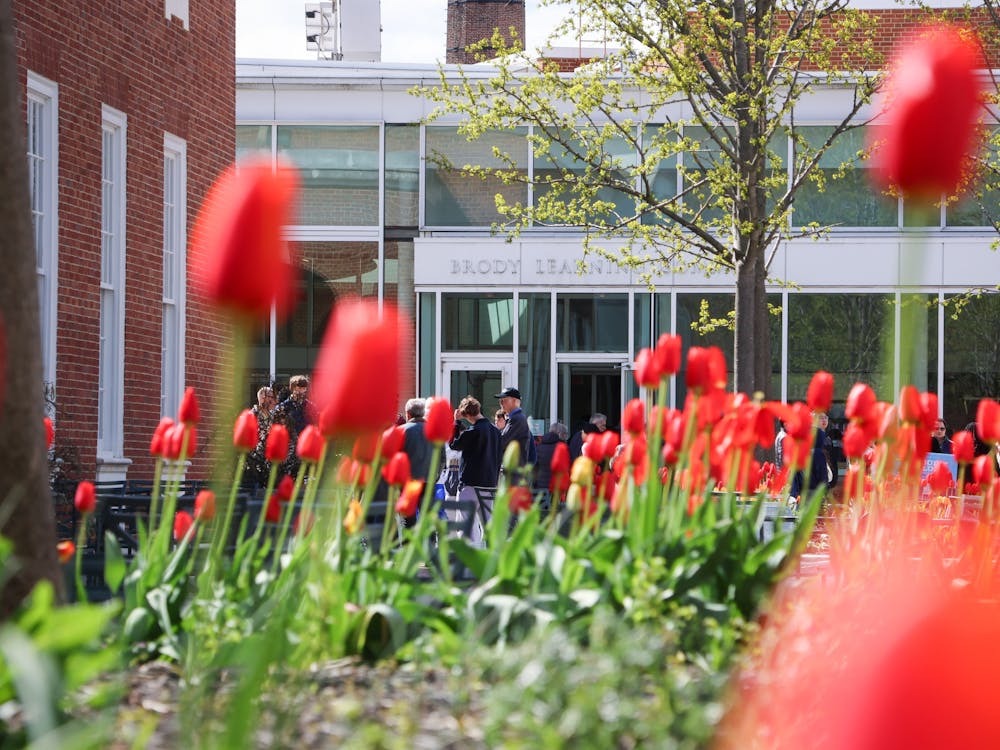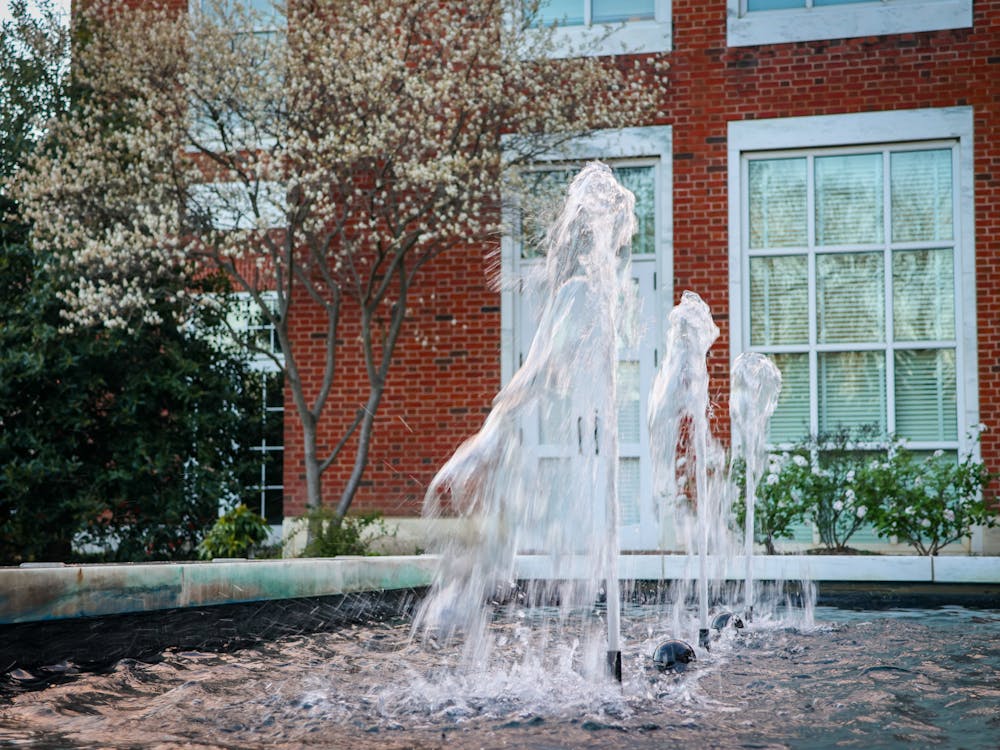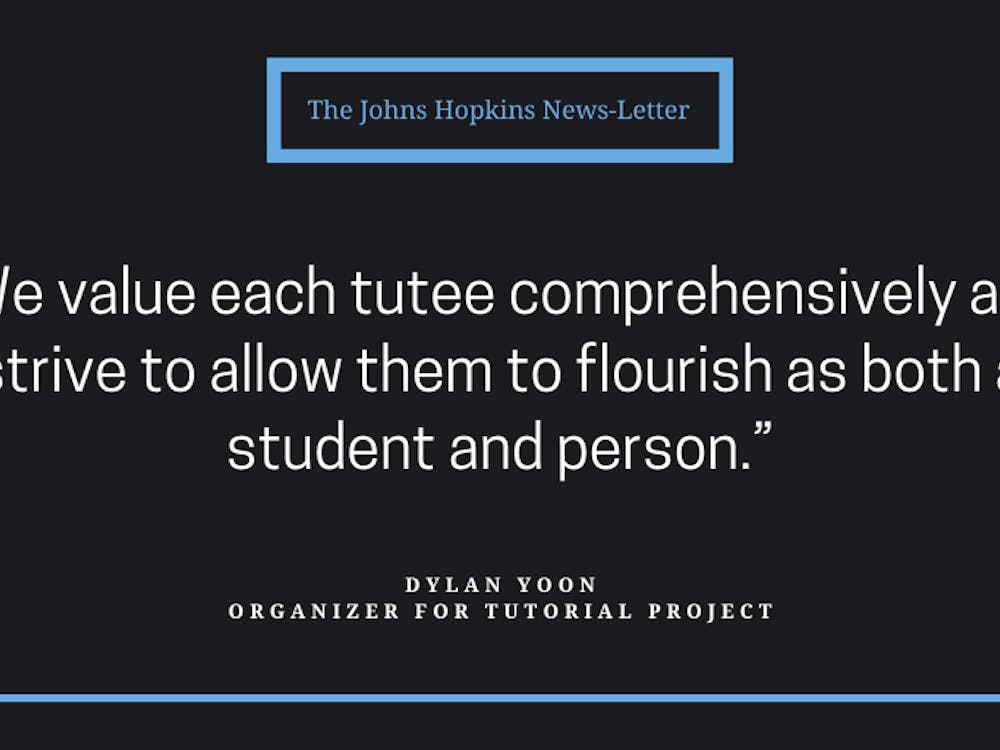While en route to classes on Wyman and Keyser Quads on Monday, students encountered a human barrier on the Breezeway. Carefully weaving through bodies that were strewn along sidewalks and staircases, members of the community witnessed a protest organized by the Hopkins Students for Justice in Palestine (SJP) meant to portray daily life in Gaza.
Roughly 30 participants, clad in black attire, laid motionless on the ground for more than 15 minutes as hundreds of people stepped over their bodies. Several others carried signs urging bystanders to stand “In Solidarity with Gaza,” to “Choose Justice, Choose Peace” and to “Break the Siege on Gaza.” As onlookers slowed to determine the premise of the protest, SJP members distributed flyers that featured statistics on the Palestinian casualties of Israel’s Operation Protective Edge, which took effect this past summer in response to the kidnapping of three Israeli students in the West Bank. “2,100 Dead; 11,000 Injured; 520,000 Displaced,” read the handouts.
Senior Basmah Nada and junior Maysa Elsheikh, two of the Hopkins SJP founders, aimed to convey through the protest — termed by SJP a “die-in” — the extent of the situation that has occurred in Gaza. Contesting that news coverage has generally subsided since late August, SJP sought to revive debate on the conflict that has endured for years, countering the misconception that clashes ended at the beginning of September.
“We had some protests and things like that in the summer organized by those of us who were still on campus,” Elsheikh said, “But we didn’t want that attention to die down. We wanted to bring up the discussion on campus to talk about it [now].”
Throughout the past year and a half that the chapter has been active at Hopkins, SJP noticed that many people genuinely want to hear more about the history and realities of the conflict in an accessible and objective environment.
Nada spoke of the many people who she met through SJP who did not seem to have knowledge of the conflict.
“They tell us, ‘We don’t know much. We know that there is injustic... We just want to know what exactly is going on, and we want to learn more,” Nada said.
Consequently, undergraduate and graduate students, representing SJP, DSAGA, GRO and other campus groups, coordinated the die-in not only to raise awareness for the bloodshed that transpired over the summer, but also to advertise “Teach-In for Gaza,” a symposium that will be held Friday to encourage on-campus dialogue about the Israeli-Palestinian crisis. Co-sponsored by the anthropology department, Human Rights Working Group, the Humanities Center and several other Hopkins associations, “Teach-In for Gaza” will gather experts in a myriad of social sciences and experiential research, who will engage in three separate panels with the hope of fostering conversation through a comprehensive analysis of this issue.
One particular controversy that will be addressed on Friday is a proposal for an Israeli Academic Boycott at Hopkins, among other academic institutions around the world. An intrinsic component of the Boycott, Divestment and Sanctions (BDS) movement among Palestinian advocates, the boycott would attempt to pressure Israel to alter its policy and practices toward Palestine through the academic isolation of Israeli scholars and universities, who promote Israeli occupation and discrimination, according ot the the proponents of the boycott.
Hopkins currently does not support the Israeli academic boycott. Subsequently, SJP wrote an open letter, signed by several Hopkins students and staff members, that voiced the need for academic freedom through the boycott.
A freshman student who wishes to remain anonymous commented that they were tremendously moved by the protest and now plans to attend “Teach-In for Gaza.”
“It definitely draws attention to the individuals actually being affected other than just the issue of Israel vs. Palestine,” they said.
Having fellow classmates displayed in such a vivid manner made the thousands of deaths in Palestine much more personal and tangible, the student said.
Not all observers shared the freshman student’s point of view on the die-in.
“It just irritates me, because a lot of people get the wrong idea,” freshman Jaszmin Gelbart said.
By depicting Israel as the aggressor, Gelbart said the protest didn’t promote the right image. Additionally, she said the die-in wasn’t effective in achieving its goal of promoting open discourse due to its disturbing and offensive nature.
“The way that they portrayed [the Israeli-Palestinian conflict], with everyone on the ground, made me really uncomfortable,” Gelbart said.
Conversely, Elsheikh praised the demonstration’s ability to incite reactions from witnesses.
“The purpose of [the die-in] was to be provocative... It does physically slow people down. You cannot just keep walking past and pay no attention to it,” Elsheikh said.
However, when asked for opinions on the protest, many felt guarded and declined to share for fear of misinterpretation and resentment. To the SJP, this silence speaks volumes, for the group believes that solutions can only be initiated and implemented effectively when all parties confer with one another openly.
“We are just giving you a small idea of what is going on [in Palestine], and we are in no way being offensive to anybody. Be as respectful as possible, but at the same time share our story,” Elsheik said.
Correction: A previous version of this article misstated that the Anthropology department will vote in December on a boycott of Israeli academia. They have no such plans at the time.
Editor’s note: This article has been edited to provide a source with anonymity. (Jan. 9 2020)






















Please note All comments are eligible for publication in The News-Letter.